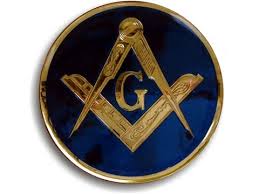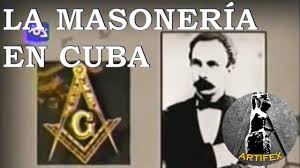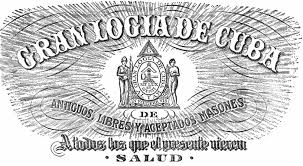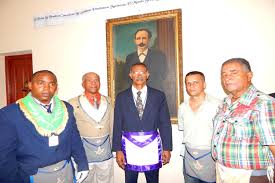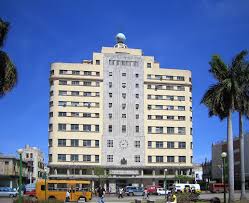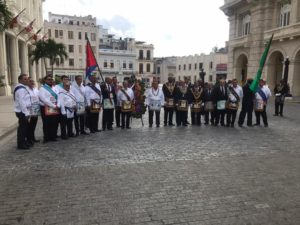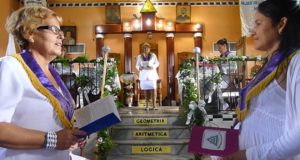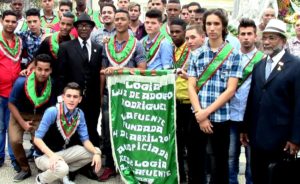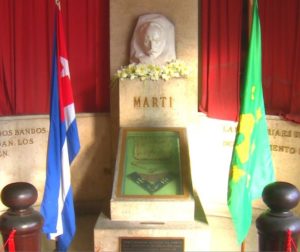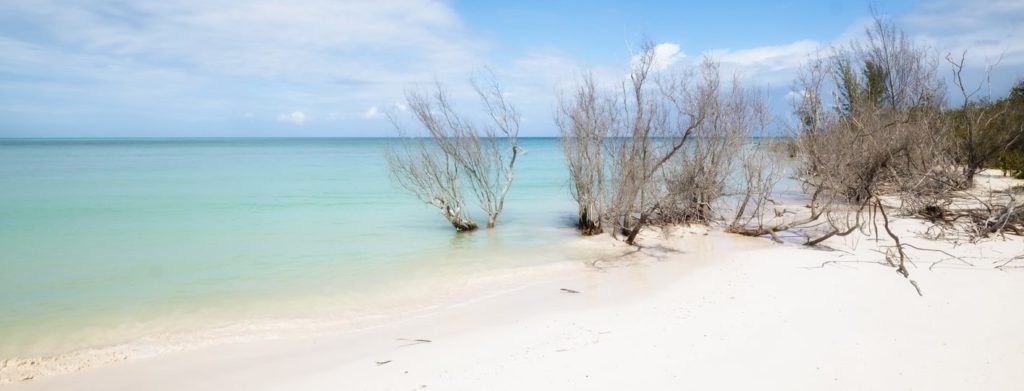La Gran Logia de Cuba (GLC) y el Supremo Consejo (SC) del Grado 33 para la República de Cuba han conmemorado 160 años de su fundación. Pese a la trascendencia histórica de la masonería cubana, para la mayoría de los profanos el suceso pasa desapercibido y, en el ámbito masónico, las celebraciones han sido discretas. Nada menos conveniente para un régimen dictatorial que ha intentado apagar toda iniciativa independiente y libre.
La masonería constituye la más antigua de las once Órdenes Fraternales existentes en Cuba; posee enorme relevancia para la identidad cultural y social cubanas; desempeñó un papel significativo durante las guerras de independencia y, por muchos años, ha contribuido a la educación y a la filantropía. Sin embargo, a partir de 1959, los cambios político-sociales propiciaron una época de penumbra en el país que se ha extendido por más de medio siglo, afectando sustancialmente a todas las instituciones religiosas y fraternales. El resultado, además de las penurias y el miedo, ha sido una lucha por la supervivencia que ha sumido a la masonería Cubana en su período más oscuro.
Desde el siglo XIX la masonería en la mayor de las Antillas se relacionó con conspiraciones separatistas como la de Román de la Luz, los Soles y Rayos de Bolívar y la Gran Legión del Águila Negra. Asimismo, fue en logias masónicas del Gran Oriente de Cuba y Las Antillas (GOCA) donde se gestó la guerra de independencia de 1868. Personalidades como Carlos Manuel de Céspedes, Ignacio Agramonte, Máximo Gómez y Antonio Maceo pertenecieron a estos talleres y en la manigua fundaron logias trashumantes.
Del mismo modo, poseen simbología masónica la Bandera, el Escudo y el Himno Nacional de Cuba. Si vamos a sus orígenes, vemos que los tres están hechos por masones: Narciso López, Miguel Teurbe Tolón y Pedro (Perucho) Figueredo.
José Martí, el Héroe Nacional cubano, se inició en lo Orden durante su estancia en España y mantuvo cercana relación con la Fraternidad durante toda su vida. De ella afirmaría: “Obrar irrevocablemente, perfeccionar el ejercicio de la libertad, preparar a los ciudadanos a la vida pública, ayudar al logro de toda noble idea, estos son, sin uno más, sin nada de incógnito, sin nada oculto, los misterios de la orden masónica”.
Fueron masones también tres presidentes de la República de Cuba: Tomás Estrada Palma, José Miguel Gómez y Gerardo Machado, quienes, pese a sus desaciertos, también promovieron grandes obras en el país.
Entre 1937 y 1958 la masonería adquiere un auge extraordinario producto tanto de su prestigio como por sus propuestas sociales. Para 1958 existían en todo el país unos 34 mil masones y la Institución era una de las más pujantes de América. Contaba asimismo con varias organizaciones paramasónicas como la Asociación de Jóvenes Esperanza de la Fraternidad (AJEF), las Hijas de la Acacia (rama femenina), El Zapato Escolar, El Traje Masónico, y entidades educativas de elevado reconocimiento como La Universidad Masónica de Cuba y la Escuela Nacional Masónica.
Uno de los masones más prestigiosos fue Carlos Manuel Piñeiro y del Cueto, Gran Maestro entre 1949 y 1959. Piñeiro apoyó activamente la lucha contra la dictadura de Fulgencio Batista; entre otros, posibilitó que en el edificio de la GLC se reunieran los conspiradores en varias ocasiones y se asilaran innumerables revolucionarios buscados por la policía. Tiempo después, Piñeiro saldría definitivamente de Cuba por divergencias con el régimen castrocomunista.
Bajo el mando de Huber Matos, Comandante de la Columna No. 9 “Antonio Guiteras”; pelearon numerosos Ajefistas y masones, casi todos miembros de las logias orientales. Matos y su ayudante, el Teniente Napoleón Bécquer, eran funcionarios de la Logia Manzanillo.
LA MASONERIA DESPUES DEL TRIUNFO DE LA REVOLUCION DE 1959.
Pese a ello, el régimen impuesto en 1959 volcó los cañones contra todas las instituciones religiosas y fraternales. Sobrevinieron los fuertes cambios políticos, económicos y sociales. Todo ello posibilitó la efervescencia de luchas ideológicas y de clases en el país, las que, ni la masonería ni ninguna institución de la sociedad civil y religiosa, pudieron evadir. El silencio y el miedo se iban apoderando del pueblo, pero también iba calando dentro de la masonería.
No obstante, uno de los elementos de más peso, de los que mediaron en la decadencia de la Fraternidad masónica, fue el cerco al que se sometió a la masonería por parte del régimen cubano, el cual impuso, desde inicios de los años 60, restricciones como: reportar al gobierno quién asistía a las reuniones, qué tópicos se trataban, quién los exponía, entregar copias de las actas, así como la obligación de pagar fuertes multas por no hacerlo o tardarse; otras les impedían realizar determinados estudios o ejercer ciertos empleos; por lo que, se entiende que, aquellos con aspiraciones educativas o profesionales, desecharan la posibilidad de iniciarse en la Orden, renunciaran a ella o mantuvieran un bajo perfil.
Hacia octubre de 1959 el Comandante y masón Huber Matos envía una carta de renuncia a Fidel Castro debido al giro comunista que estaba tomando la Revolución. En consecuencia, Matos fue acusado de traición y condenado a veinte años de cárcel; y lo mismo ocurrió con miles de personas que manifestaron su oposición al sistema comunista, entre ellos decenas de masones y Ajefistas.
Entre los años 60 y 80, algunas logias fueron cerradas por ser consideradas focos contrarrevolucionarios, por lo que los templos son confiscados por el régimen. Igualmente, mediante la Ley de Reforma Urbana del 14 de octubre de 1960, se ocupan varios de los once pisos del edificio de la GLC; entre ellos, el 6, 7, 8, 9, parte del 10 y la planta baja.
Ante todas las arbitrariedades, las logias cubanas, una vez más, sirvieron de espacio para conspirar. Desde mayo de 1959 se encauza una organización político-militar llamada Movimiento Masónico Clandestino (MMC). Sus fines eran incorporar activamente a los masones del hemisferio en la lucha contra el Comunismo, y apoyar cada acción que tendiera a la derrota del régimen castrista y restaurara el sistema democrático en la Isla.
Ángel Pardo, masón y prisionero político cubano, relata que, de esa manera, “la masonería se involucra en esta nueva etapa de liberación y los templos se fueron convirtiendo en focos de rebeldía, no para hacer política, sino para liberar a la Patria del nuevo yugo que estaba esclavizando a la Isla, como en otrora lo hicieran nuestros mambises”.
Este movimiento fue descubierto en septiembre de 1961, algunos fueron apresados y fusilados y otros logran escapar.
Además del MMC, existieron otras organizaciones opositoras en las militaron masones; una de ellas fue la llamada Acción Cívica Anticomunista (ACA), cuyo Coordinador General era Luis García Caro, ex Venerable Maestro de la Logia Fraternidad y Constancia, de Punta Brava. Cientos de sus integrantes, así como otros masones contrarios al régimen, resultaron fusilados o encarcelados.
Es significativo además que, entre los presos políticos de la etapa, tanto en La Cabaña, en La Habana, como en el Presidio Modelo, en Isla de Pinos, se fundan logias masónicas y Ajefistas. Una fue “Luz en las Tinieblas” activa por muchos años en esta prision, otra fue la llamada “Mártires de La Cabaña”, de esa ultima una vez en el exilio, en Miami, varios de sus miembros se dan a la tarea de reorganizar el taller y fundan, el 7 de noviembre de 1985, una logia con el mismo nombre; esta funcionó durante varios años, integrada a la Federación de Masones Cubanos Exiliados “Cuba Primero”, y actualmente sesiona de manera independiente.
Muchos masones se exilian, fundamentalmente en los Estados Unidos, y continuarían la lucha contra la dictadura implantada en Cuba. Luego de más de 20 años de organización y pujanza, en 1980 constituyen la Gran Logia de Cuba de A.L. y A.M. (en el Exterior). Con los años, la GLC (en el Exterior) fue creciendo en membresía, e incluso asiló masones de logias cubanas que habían sido clausuradas por el régimen de La Habana. Asimismo, los masones cubanos de la diáspora fueron constituyendo logias en diferentes ciudades norteamericanas como: California, Chicago, Texas, Louisiana, Tampa, Atlanta, New Jersey y Nueva York.
Asimismo, se han agrupado en asociaciones como: la Federación de Masones Cubanos Exiliados “Cuba Primero”, la Gran Logia Unida de las Antillas, la Gran Logia Latinoamericana, el Grupo de Apoyo a los Masones Cubanos (GAMEC), entre otros. En ellas el tema político ha sido asumido de diversas maneras, pero todas se han declarado ajenas o contrarias al castrismo y al comunismo; unas son beligerantes, otras más abiertas al diálogo fraternal.
CUBAN MASONRY AND ITS HUGE RELEVANCE IN THE NATION.
The Grand Lodge of Cuba (GLC) and the Supreme Council (SC) of Grade 33 for the Republic of Cuba have commemorated the 160th year of its foundation. Despite the historical significance of Cuban Freemasonry, for most laymen the event goes unnoticed and, in the Masonic sphere, the celebrations have been discreet. Nothing less convenient for a dictatorial regime that has tried to quench all independent and free initiative.
Freemasonry constitutes the oldest of the eleven Fraternal Orders existing in Cuba; it has enormous relevance for Cuban cultural and social identity; It played a significant role during the Wars of Independence and, for many years, has contributed to education and philanthropy. However, from 1959 on, the political-social changes brought about a period of gloom in the country that has spanned more than half a century, affecting substantially all religious and fraternal institutions. The result, in addition to the hardships and fear, has been a fight for survival that has plunged Cuban Freemasonry into its darkest period.
Since the 19th century, Freemasonry in the Greater Antilles was associated with separatist conspiracies such as that of Román de la Luz, the Suns, and Rays of Bolívar, and the Great Legion of the Black Eagle. Likewise, it was in Masonic lodges in the Greater East of Cuba and the Antilles (GOCA) that the war of independence of 1868 was conceived. Personalities such as Carlos Manuel de Céspedes, Ignacio Agramonte, Máximo Gómez, and Antonio Maceo belonged to these workshops and in La Manigua. They founded transhumant lodges.
In the same way, the Flag, the Shield, and the National Anthem of Cuba have Masonic symbolism. If we go to their origins, we see that all three are made by Freemasons: Narciso López, Miguel Teurbe Tolón, and Pedro (Perucho) Figueredo.
José Martí, the Cuban National Hero, began in the Order during his stay in Spain and maintained a close relationship with the Fraternity throughout his life. He would affirm it: “Act irrevocably, perfect the exercise of freedom, prepare citizens for public life, help achieve every noble idea, these are, without one more, without anything incognito, without anything hidden, the mysteries of the Masonic order ”.
Three presidents of the Republic of Cuba were also freemasons: Tomás Estrada Palma, José Miguel Gómez, and Gerardo Machado, who, despite their mistakes, also promoted great works in the country.
Between 1937 and 1958 Freemasonry acquired an extraordinary boom as a result of both its prestige and its social proposals. By 1958 there were around 34,000 freemasons throughout the country and the Institution was one of the most powerful in America. It also had several paramasonic organizations such as the Association of Young Hope of the Fraternity (AJEF), the Daughters of the Acacia (female branch), The School Shoe, The Masonic Suit, and highly recognized educational entities such as The Masonic University of Cuba and the National Masonic School.
One of the most prestigious Masons was Carlos Manuel Piñeiro y del Cueto, Grand Master between 1949 and 1959. Piñeiro actively supported the fight against the dictatorship of Fulgencio Batista; among others, it made it possible for the conspirators to meet on the GLC building on several occasions and to assassinate countless revolutionaries wanted by the police. Sometime later, Piñeiro would definitely leave Cuba due to divergences with the Castro-communist regime.
Under the command of Huber Matos, Commander of Column No. 9 “Antonio Guiteras”; Numerous Ajefistas and Masons fought, almost all members of the eastern lodges. Matos and his assistant, Lieutenant Napoleón Bécquer, were officials of the Manzanillo Lodge.
MASONRY AFTER THE TRIUMPH OF THE REVOLUTION OF 1959.
Despite this, the regime imposed in 1959 overturned the cannons against all religious and fraternal institutions. Strong political, economic, and social changes ensued. All this made possible the effervescence of ideological and class struggles in the country, which neither Masonry nor any institution of civil and religious society could evade. Silence and fear were taking over the town, but it was also penetrating into the masonry.
However, one of the most important elements, of those that mediated the decline of the Masonic Fraternity, was the encirclement to which he was subjected to Freemasonry by the Cuban regime, which imposed, from the early 1960s, restrictions such as: reporting to the government who attended the meetings, what topics were discussed, who presented them, giving copies of the minutes, as well as the obligation to pay heavy fines for not doing so or taking too long; others prevented them from completing certain studies or exercising certain jobs; therefore, it is understood that those with educational or professional aspirations discarded the possibility of starting the Order, renounced it or kept a low profile.
Towards October 1959 the Commander and Freemason Huber Matos sent a letter of resignation to Fidel Castro due to the communist turn the Revolution was taking. Consequently, Matos was accused of treason and sentenced to twenty years in prison; and the same happened with thousands of people who expressed their opposition to the communist system, among them dozens of Freemasons and Ajefistas.
Between the 60s and 80s, some lodges were closed because they were considered counterrevolutionary centers, so the temples were confiscated by the regime. Likewise, through the Urban Reform Law of October 14, 1960, several of the eleven floors of the GLC building are occupied; among them, 6, 7, 8, 9, part of 10, and the ground floor.
Before all the arbitrariness, the Cuban lodges, once again, served as a space to conspire. Since May 1959, a political-military organization called the Clandestine Masonic Movement (MMC) has been channeled. Its aims were to actively incorporate the Freemasons of the hemisphere in the fight against Communism and to support every action that would lead to the defeat of the Castro regime and restore the democratic system on the Island.
Ángel Pardo, a freemason and a Cuban political prisoner, relates that, in this way, “Freemasonry is involved in this new stage of liberation and the temples became centers of rebellion, not to do politics, but to liberate the Homeland from a new yoke that was enslaving the Island, as our mambises once did. ”
This movement was discovered in September 1961, some were arrested and shot, and others managed to escape.
In addition to the MMC, there were other opposition organizations in the Freemasons; one of them was the so-called Civic Anticommunist Action (ACA), whose General Coordinator was Luis García Caro, former Venerable Master of the Lodge Fraternity and Constancy, of Punta Brava. Hundreds of its members, as well as other anti-regime freemasons, were shot or jailed.
It is also significant that, among the political prisoners of the stage, both in La Cabaña, in Havana, and in the Model Prison, in Isla de Pinos, Masonic lodges and Ajefistas are founded. One was “Light in the Darkness” active for many years in this prison, another was the one called “Martyrs of La Cabaña”, of that last one once in exile, in Miami, several of its members take on the task of reorganizing the workshop and founded, on November 7, 1985, a lodge with the same name; This functioned for several years, integrated into the Federation of Cuban Exiled Masons “Cuba First”, and is currently in session independently.
Many Freemasons go into exile, mainly in the United States, and would continue the fight against the dictatorship implanted in Cuba. After more than 20 years of organization and vigor, in 1980 they constituted the Grand Lodge of Cuba by A.L. and A.M. (abroad). Over the years, the GLC (Abroad) grew in membership and even masons from Cuban lodges that had been closed by the regime in Havana. Likewise, the Cuban Freemasons of the diaspora were setting up lodges in different North American cities such as California, Chicago, Texas, Louisiana, Tampa, Atlanta, New Jersey, and New York.
Likewise, they have been grouped into associations such as the Federation of Cuban Exiled Masons “Cuba First”, the United Grand Lodge of the Antilles, the Latin American Grand Lodge, the Support Group for Cuban Masons (GAMEC), among others. In them, the political issue has been assumed in various ways, but all have declared themselves alien or contrary to Castroism and communism; some are belligerent, others more open to fraternal dialogue.
Agencies/ Cubanet/ Camila Acosta/ Internet Photos/ Arnoldo Varona/ www.TheCubanHistory.com
THE CUBAN HISTORY, HOLLYWOOD.



